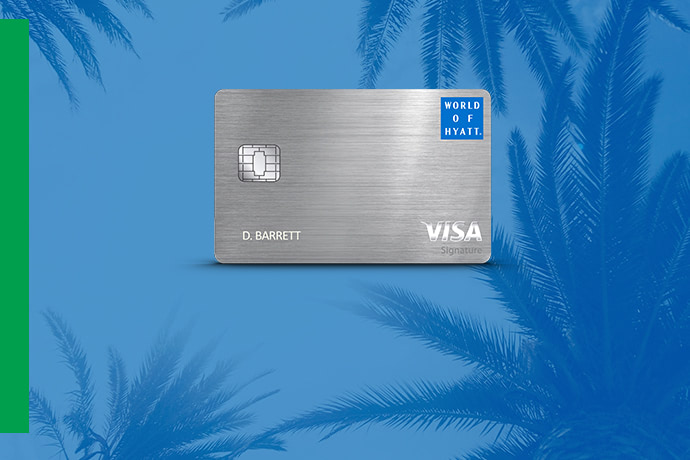10 Debit Card Trends for Payment Card Marketers to Watch

In the fall of 2022, data collected by S&P Global indicated that debit had surpassed credit as consumers’ preferred payment card. As issuers assess and shore up their debit card strategies to build on this momentum – and create ecosystems where both debit and credit have a place – they’ll need in-depth knowledge of debit card trends. These key insights will show how the rise in debit usage overlaps with other initiatives (like digital transformation and financial education) and intersects with various audience segments.
As noted2 by Mercator Advisory Group, “85% of U.S. adults have a debit card, spanning across all age groups, income brackets and education levels. However, differences appear when preference for debit payments is considered. It is critical for issuers and processors to understand who prefers to use debit cards and under which circumstances to target marketing and rewards initiatives most effectively.”
Toward that “solid understanding,” we’ve consulted reports from S&P Global, Mercator Advisory Group and Pulse and flagged several debit card trends we think payment card marketers will want to monitor closely.
1. Consumers’ COVID-era payment preferences are sticky.
Both S&P and Pulse say the habits consumers adopted around payments during quarantines and lockdowns appear to be more permanent than anticipated. According to S&P, when consumer attention turned away from travel and dining out, they shifted their focus to “everyday necessities,” where the preference for debit has been most established.1
Specifically, S&P says, “We think more consumers began reaching for debit over credit cards and likely stored their debit cards as default payment options. We’ve found that lower-income households use debit more than higher-income households. This suggests debit may be used more for necessities, while credit may be used more for discretionary spending. We expected consumers to have a much higher preference for credit when travel resumed and stores reopened. However, we’ve found that consumers prefer debit more today than they did at the height of the pandemic.”
Citing data from Pulse, Payments Journal confirms the debit card trend: “Overall usage is up, and despite the return to in-store shopping, many digital habits seen during pandemic-related lockdowns continue to be adopted in consumers’ everyday lives.”
2. Current economic pressures spur more debit usage.
S&P Global believes1 that economic uncertainty may cause consumers to reach for debit instead of credit. It reports, “As consumers came out of lockdown going into 2021, they had pent-up demand and spent in categories where credit often performs better, like travel and entertainment, while in 2022, consumers are facing increased macroeconomic pressures, which often lead to greater debit usage.”
3. BNPL deals credit cards a double blow.
Payments Journal, reporting on Pulse research, suggests, “It’s possible that as alternative banking products, like peer-to-peer (P2P) transactions and BNPL gain steam, this could reduce the need to build up a credit history with a credit card.”
And as many consumers tap Buy Now Pay Later options, they not only turn less to credit cards at the time of purchase but also favor debit cards as the payment source for BNPL installment payments. “Consider that over a quarter of consumers (26%) have used BNPL to make a purchase in the past six months, rising to 51% of Gen Zers and 42% of Millennials,” says S&P. “[Younger generations] tend to be the strongest users of BNPL, which typically is positioned as a credit card replacement and relies heavily on debit for repayments.”1
4. “Card Not Present” is a potential growth area for debit.
According to the 2022 Pulse Debit Issuer Study, “One-third of debit use is now CNP. CNP transactions accounted for 33% of debit use in 2021, compared to 31% in 2020, based on consumers’ continued adoption of debit for digital purchases.” And in its article about the study, Payments Journal attributes this to the behaviors consumers solidified during pandemic-related lockdowns.
Pulse says, “Despite a return to in-person shopping, CNP purchases are still expanding. Even with the pandemic easing and consumers returning to brick-and-mortar retail locations, card-not-present (CNP) activity demonstrated a positive trajectory as debit cardholders continued to embrace e-commerce and other remote payment options, including retailer-specific apps, mobile order and pay and subscription shopping.”3
5. Consumers are choosing debit cards for mobile wallets.
Reporting on debit card trends data from Pulse, Payments Journal says, “Debit is increasingly used as the primary payment type in mobile wallets such as Apple Pay, Google Pay, Samsung Pay and Click to Pay. Consumers are now more likely to have debit credentials loaded into their digital wallet than any other payment type.” Pulse calls3 Apple Pay consumers’ “go-to digital wallet” and indicates that it accounted for 88% of debit digital wallet payments.
6. P2P is the fastest-growing type of debit transaction.
Data from the Pulse study3 shows double-digit growth for account-to-account (A2A) transfers, making them the “fastest growing type of debit transaction.” In addition, Pulse data on debit card trends shows increases in both value and volume: “There was a 45% gain in dollar value and a 38% increase in the number of transactions — as well as an impressive average transaction value of $137.”
7. Consumers understand the utility of debit.
Financial education videos have become popular on TikTok, YouTube and other social channels, tapping – and perhaps inspiring – younger generations’ interest in making sound financial decisions. Many FS brand and industry media websites also house robust financial wellness sections full of tools and resources, including guidance on the choice between debit and credit cards.
For example, Chase offers consumers several “life hacks” to help them know when they may want to use debit vs. credit cards, such as this recommendation on the utility of debit cards: “When you’re trying to avoid debt, when you want to pay for everyday purchases and when you don’t want to carry cash.” And GO Banking Rates has published an article for consumers suggesting debit over credit for “eliminating the need to carry cash, instant access to money in your bank account, taking advantage of debit card rewards without accumulating debt and sticking to a budget.”
One result of all this financial education content is that consumers may be making payment choices with purpose – including leveraging debit for financial management. Citing Mercator, Payments Journal reports that Gen Z may favor debit because it makes tracking account balances easier and helps them avoid debt. In addition, Payments Journal says, “It may be because of the personal financial management aspect that younger generations prefer debit cards.”
8. As a replacement for cash, contactless debit has lots of room to grow.
S&P debit card trends data1 shows that contactless card issuance is increasing. Specifically, it says, “Nearly three in five (59%) U.S. consumers have a contactless card. As we have seen in markets like Australia and the U.K., contactless debit cards tend to displace cash for smaller ticket purchases, leading to an increase in card utilization.”
In the U.S., contactless usage is currently a small portion of debit transactions. The Pulse study3 reports, for example, “Contactless transactions are a low 6% of total debit transaction activity – though this is a substantial increase from the 1 .6% reported in last year’s survey.” And since Pulse data3 also shows consumers prefer debit for everyday items at grocery stores, pharmacies, gas stations, online retailers and warehouse clubs, there’s opportunity for growth.
9. A robust debit customer experience can be a differentiator.
Online retailers and fintech offer consumers timely, relevant solutions, and traditional banking customers crave similar options. FIs and issuers are taking note. According to a Payments Journal article citing Pulse data, “Issuers are increasingly investing in digital capabilities to remain relevant and competitive. They are doing this to compete not only with one another but also with the emerging fintech companies.”
What do those digital capabilities look like? According to Payments Journal, they include a “simple, intuitive interface,” notifications of suspicious activity and self-service mobile options for transactions like freezing cards or disputing charges.
10. Debit launches banking relationships with younger demographics.
Generational differences in debit card use – including Gen Z / Millennial preference for debit – point to debit as an opportunity to establish trust and build loyalty. Issuers who see debit as a starting point for a long-term customer relationship will want to invest in debit products and the digital capabilities that support them.
The Gen Z / Millennial reliance on debit is well accepted, and stats from S&P Global1 indicate that it may be around for a while. In fact, debit habits seem to be getting more ingrained. S&P says, “We’ve observed a large jump in the percentages of Gen Zers, Millennials and Gen Xers using debit cards as their primary payment card from the previous year. Gen Zers had a 26.8 percentage point increase in debit usage since 2021, and Millennials and Gen Xers had 18.4 and 18.6 percentage point increases, respectively.”
SOURCES
- Debit Surpasses Credit as Consumers’ Preferred Payment Card, S&P Global Market Intelligence (September 2022)
- 2022 North American Payments Insights, U.S.: Significant Consumer Trends in Payments, Mercator Advisory Group (December 2022)
- 2022 PULSE Debit Issuer Study, Pulse (2022)
- Consumer Payment Choice: Understanding Debit Card Consumer Preferences, Mercator Advisory Group (April 2022)









